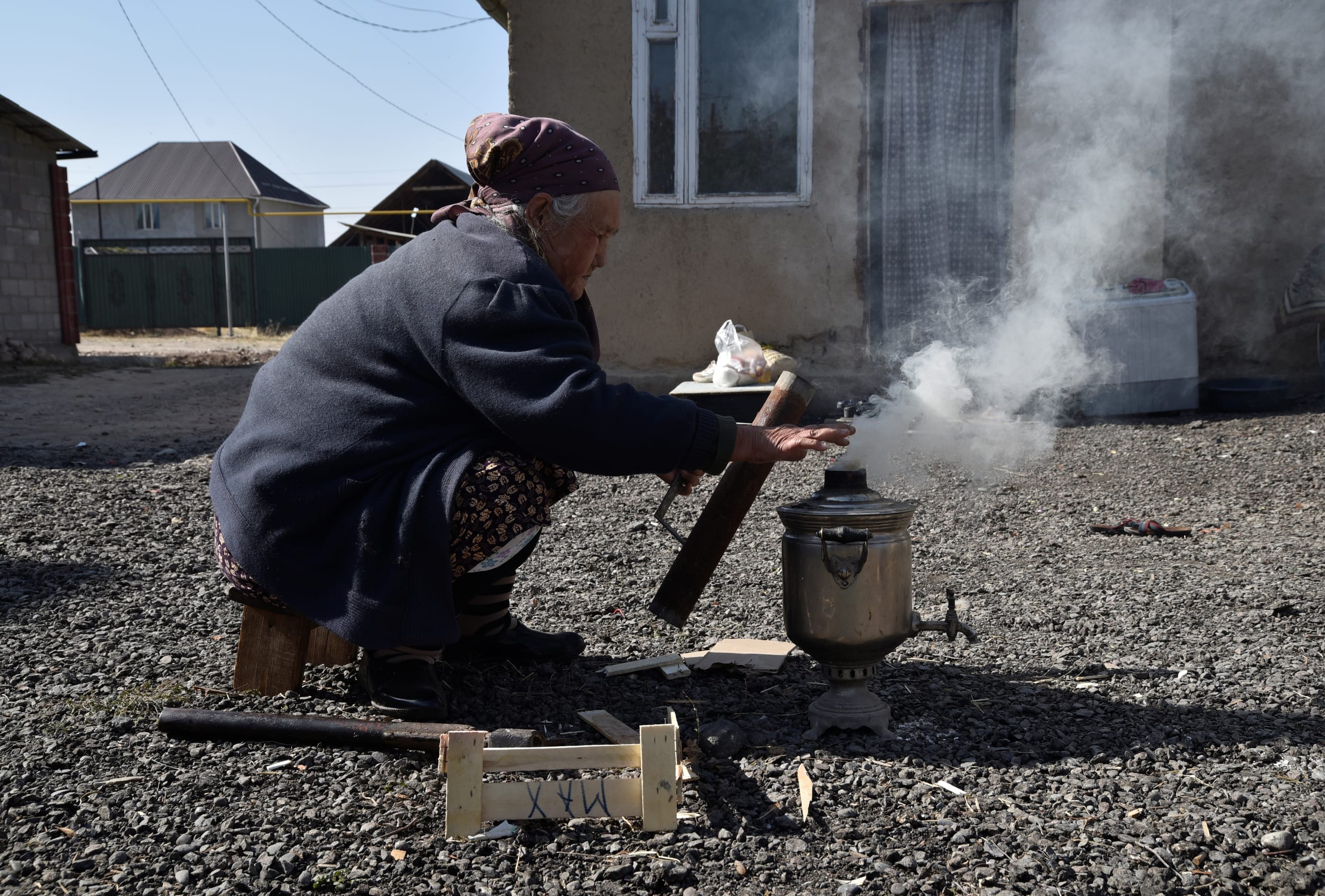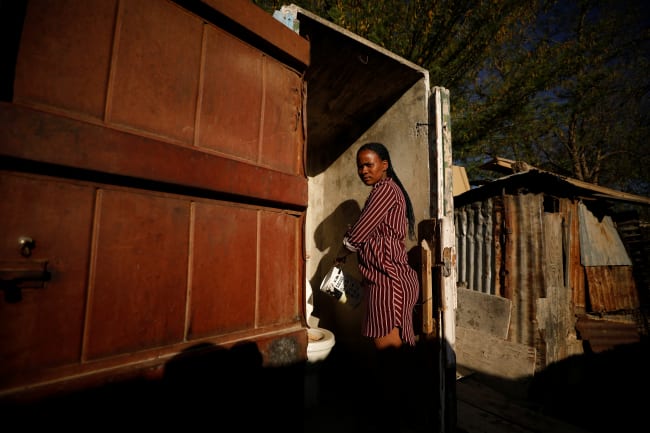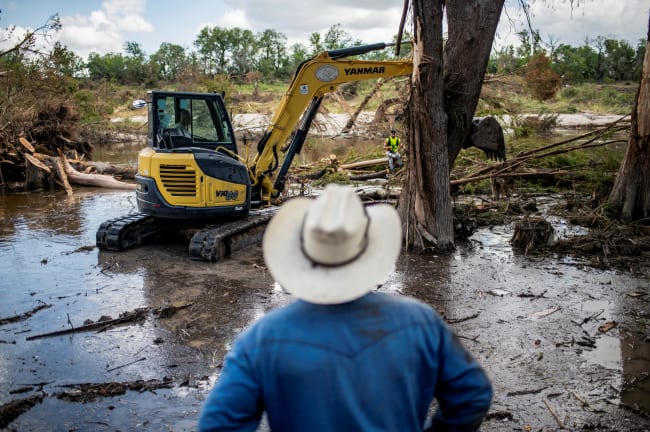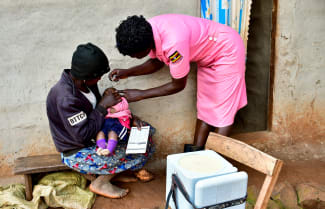Kyrgyzstan, a mountainous, landlocked country in Central Asia, illustrates the severity of climate threats and the challenges of building resilience.
At last year's UN climate summit (COP29) held in Baku, Azerbaijan, Kyrgyz President Sadyr Japarov emphasized that Kyrgyzstan's glaciers—the source of much of its fresh water—have shrunk 16% over the past 70 years and noted projections suggesting a possible loss of more than 50% by 2100 [PDF]. The implications are dire: Glacial melt fuels rivers that millions across Central Asia rely on, meaning accelerated loss directly translates to water scarcity.
The combination of shrinking foreign aid, weak infrastructure, and incomplete data collection leaves the country ill prepared to manage climate-related outbreaks, nutrition shortfalls, and heat waves. By introducing inclusive targets, equitable financing, and recognition that protecting health is central to building climate resilience, this week's COP30 conference in Belém, Brazil, offers an opportunity to ensure that mountain communities are not sidelined.
Kyrgyzstan's unique mountainous geography renders it highly hazard prone
In April 2025, Bishkek hosted the Global Mountain Dialogue for Sustainable Development, drawing more than 200 delegates from 50 countries. The meeting amplified the message that mountain communities, despite being highly vulnerable, remain marginalized in climate and health planning. Such global forums have helped make these challenges more visible and have revealed the pressing need to bridge climate action and public health measures in Central Asia. Building on its role in convening global forums, Kyrgyzstan could emerge as a leader on climate and health by expanding environmental health programs and making health a pillar in its National Adaptation Plan (NAP).
Climate Hazards and Health Threats
Kyrgyzstan's unique mountainous geography renders it highly hazard prone. The World Bank [PDF] estimates that the country experiences from 3,000 to 5,000 earthquakes annually and is subject to recurrent floods, avalanches, and landslides. Such shocks destroy infrastructure and displace communities and disrupt water and sanitation systems, creating conditions for infectious disease outbreaks.
Apart from disasters, slow‑onset environmental risks impose heavy health burdens. Air pollution in Bishkek averages around 38 micrograms of particulate matter 2.5 (PM 2.5) per cubic meter of air—far above the World Health Organization guideline—and in Kyrgyzstan, about 32% of deaths [PDF] from stroke and ischemic heart disease were linked to air pollution in 2019. As glaciers retreat and droughts intensify, floods and runoff increasingly contaminate rivers and wells, which many are forced to rely on. Water insecurity compounds health problems: World Bank assessments estimate that roughly one‑third of rural Kyrgyzstan lacks access to safe drinking water and note that poor water quality drives high rates of hepatitis and diarrhea.

The result is a layered climate-health challenge in which acute hazards collide with chronic environmental pressures. Extreme heat waves and cold already endanger vulnerable populations. Research shows that each degree Celsius increase in temperature raises hospital admissions by about 2.5%, that heavy precipitation can contaminate drinking‑water supplies, and that drought reduces water availability. Viral hepatitis, acute intestinal infections, and tick-borne illnesses are expected to increase as warmer temperatures and more frequent floods create favorable conditions for waterborne and vector‑borne pathogens.
The Children's Climate Risk Index from the UN Children's Fund (UNICEF) ranks Kyrgyzstan 94 out of 163 countries and reports that more than 1 million children live in areas highly exposed to disasters such as earthquakes, floods, and avalanches. The same assessment warns that Bishkek's deteriorating air quality is already driving higher rates of childhood asthma and respiratory illness and that more than 300,000 children are affected by respiratory diseases related to air pollution. Climate-driven temperature shifts and prolonged winter inversions trap fine particles in the valleys, and wildfire smoke and dust from glacier retreat persist. UNICEF stresses the importance of strengthening child‑focused social services, including health, nutrition, and sanitation, to buffer these escalating climate impacts.
Aid Cuts, System Gaps
Even as awareness of climate-health challenges grows, international support is shrinking. In January 2025, the United States froze new development assistance to Central Asia: Kyrgyzstan lost about 78% of its programs funded by the U.S. Agency for International Development (USAID). Tajikistan lost 69%, and several programs in other Central Asian countries were suspended. The aid withdrawal coincided with shifting Western donor priorities. Suspended initiatives included hospital renovations, school safety programs, rural clinic repairs, and community water filtration projects. Emergency medical training and rural health infrastructure investments were canceled as aid was redirected to other crises.
These cuts came at a precarious moment for Kyrgyzstan, a lower-middle-income country where the structurally fragmented health system already faces low funding, high out‑of‑pocket spending, unequal access, and shortages of medical personnel and hospital beds.
From Plan to Practice
Despite these challenges, Kyrgyzstan is still making progress on climate and health. In March 2025, the government released its NAP developed with support from the UN Development Program (UNDP). The plan identifies six priority sectors—agriculture and irrigation, health, emergency management, biodiversity conservation, energy, and climate‑resilient cities—and emphasizes strengthening disease surveillance, building heat wave preparedness, and ensuring hospitals have resilient water and energy supplies.
The country has worked to elevate the profile of mountain-related issues in global forums, including the July 2025 environmental summit in Russia's Altai region, where Prime Minister Adylbek Kasymaliev announced new glacier monitoring systems across the Tien Shan and Pamir ranges. Kasymaliev reaffirmed voluntary targets to cut greenhouse‑gas emissions by 16% by 2030 and to achieve carbon neutrality by 2050. Kyrgyzstan has championed the UN resolution on Sustainable Mountain Development and announced that it will host a second Global Mountain Summit, titled Bishkek+25, in 2027. The University of Central Asia's Sustainable Mountain Development Program supported this effort and will host the upcoming International Climate and Health Conference in Bishkek next year.
Domestically, the government has made efforts to link environmental action to public health outcomes. A law enacted in 2025 will implement a nationwide ban on single-use nonrecyclable plastics from 2027, aiming to protect fragile mountain ecosystems and water sources such as Lake Issyk‑Kul. President Japarov's Zhashyl Muras (Green Legacy) campaign has planted more than 29 million trees since 2022 and aims to plant more than 70 million seedlings to reduce urban heat and preserve water flows. In addition, Kyrgyzstan expanded air-quality monitoring and launched a $50 million Air Quality Improvement Project running from 2024 to 2030, financed by the World Bank, to promote clean heating and modernize city planning.
Looking Ahead at COP30: Make Health Explicit
As countries gather in Belém for COP30, Central Asia's experience highlights that climate change is inseparable from health equity. In Kyrgyzstan, melting glaciers, worsening air pollution, and unsafe water disproportionately affect the poorest and most marginalized mountain communities, including children. Neglecting these links risks reversing progress in disease control, nutrition, and child health.
To sustain momentum, COP30 leaders need to ensure all national plans embed measurable health-adaptation indicators and secure dedicated finance for mountain-region resilience. Although traditional aid flows have declined, new support could come through regional climate funds, blended financing, and partnerships with multilateral development banks.
International donors and multilateral institutions need to address the aid gap by supporting Kyrgyzstan's adaptation plan and reinstating community-based programs for health, water, and sanitation in Central Asia. At the same time, national and local authorities need to invest in climate‑sensitive health data, integrating indicators into health records, and expanding resilient infrastructure for clinics, laboratories, and emergency networks.
As long as health remains excluded from climate policy, adaptation will fall short and hard-won health gains will be undermined.













